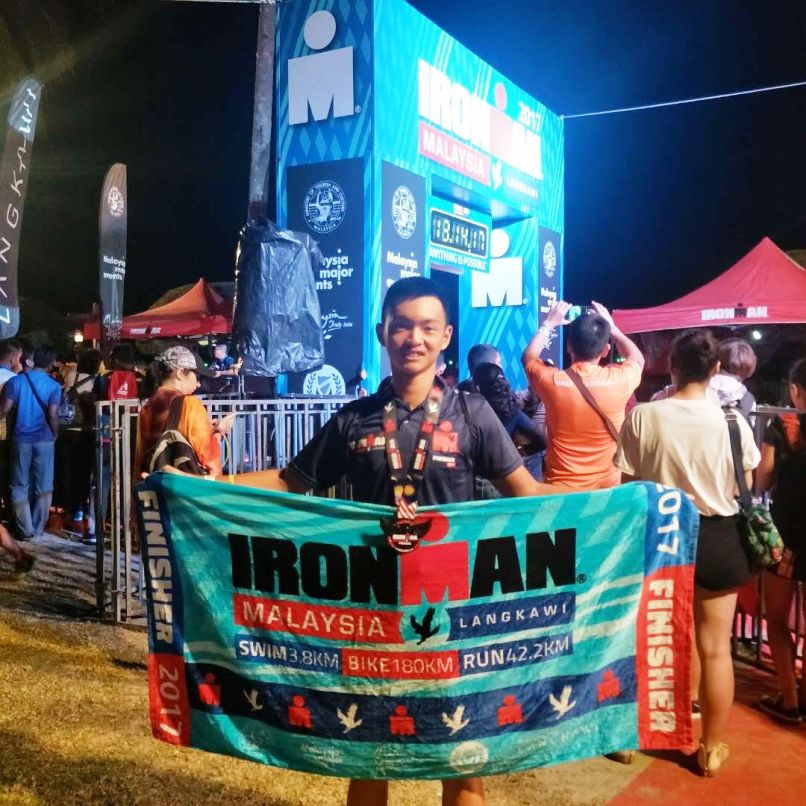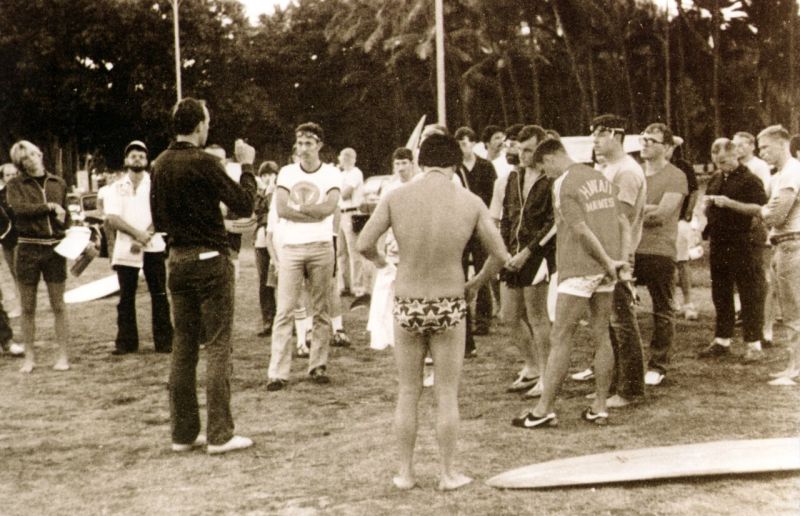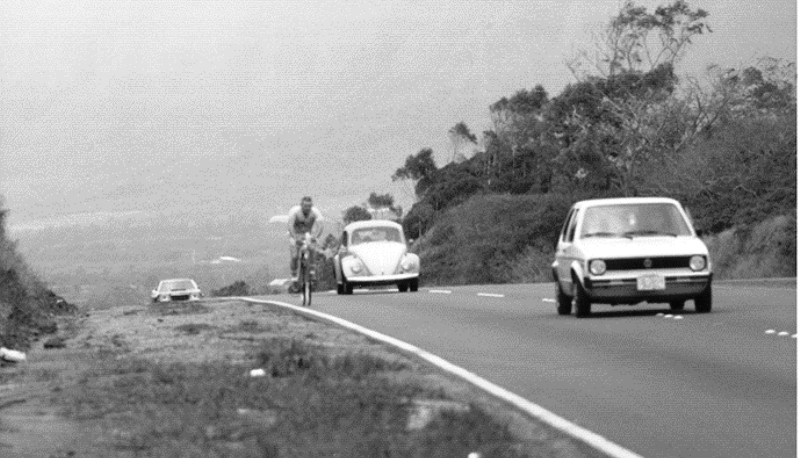
When John Collins had a debate with his friends if cyclists, swimmers or runners were the most accomplished athletes, little did he know he would be the founder of a fitness revolution called the IRONMAN, founded some 40 years ago.
Of course, tech genius scientist and engineer aficionado Tony Stark in the Avengers would only popularize the word IRONMAN, but we’re not talking cool superhero with an armoured suit who can fly.
IRONMAN is defined as the epitome of fitness and endurance, where athletes push their limits with a 2.4 mile swim, followed by a 112-mile bike, before finishing off with a 26.2-mile run.
As we reflect on the evolution of IRONMAN after four decades, how exactly did it begin?
A debate birthed IRONMAN
On one sunny Hawaiian day in 1977, former United States Navy Commander John Collins was arguing with his friends on who were the better athletes – swimmers or runners.
John threw cycling into the mix too, and a light-bulb moment of combining all events into one mega-race sprang up to settle this debate.
“I said the gun would go off and the clock would keep running, and whoever finished first, we’d call him the IRONMAN. It got a really good laugh at that time,” John said of the name.
IRONMAN would be no laughing matter, branding itself as one of the signature endurance events in the world.
The event started growing both in participation and commercially, and over the next 40 years IRONMAN would reach millions through television coverage.
A budding IRONMAN participant had to be extremely committed and well trained to tackle all three sports at one go, while completing the mission within a stipulated time. IRONMAN athletes are committed, disciplined and focus individuals.
Sports Illustrated took IRONMAN to the next level
While IRONMAN was getting popular through word of mouth, but it was Tom Warren who put the event on the global map.
Gordon Haller, a taxi driver from Honululu would win the first ever IRONMAN race with only 12 finishers out of 15 participants in 1978, but the following race would propel the event to new heights.
When Warren won the second IRONMAN series in 1979, his victory was lapped up by international sports magazine Sports Illustrated.
A 10-page journey of IRONMAN depicted how some of the key characters faced the grueling challenges to success.
The publicity on pushing one’s body to the limit was a game changer.
Warren became a minor celebrity, and Collins was bombarded with letters of interests from all over the world from people who wanted to participate.
Evolution of IRONMAN
IRONMAN was still considered a hobby in the late 70’s as people continued to push their bodies to test themselves in what would be described as a social setting.
But IRONMAN was rapidly gaining in popularity, thanks to more sponsorship and televised coverage.
Women were also taking part, which added to the lure of the sport.
The IRONMAN series continued to expand, and in 1985, IRONKIDS was born.
A $100,000 donation by an anonymous donor also increased the prestige of IRONMAN, and prize money continued to escalate in the following years. As it became more competitive and demanding in numbers, a governing body was needed to manage and so the World Triathlon Corporation was born.
These additions set the tone for the race to expand to the other continents as well as Asia. The race anchored itself in Malaysia back in the year 2000 envisioned by Tun Mahathir to bring international events to the island of Langkawi.
By 2017, IRONMAN was watched by 4.7 million viewers’ worldwide, taking in more than 33 million minutes of live coverage.
Lyn Lemaire makes history as first women finisher
While Warren basked in the limelight after his momentous victory, Lyn Lemaire would stamp her mark as the first female finisher in the IRONMAN.
She finished fifth overall in 12 hours 55 minutes, some 20 minutes behind the winner.
Her feat paved the way for more women to challenge their male counterparts. IRONMAN started the Women for Tri initiative to increase female participation at all levels of triathlon.
The program seeks to identify and diminish primary barriers to entry and mobilize triathlon advocates to encourage and engage female athletes across all race distances and representing all athletic abilities.
Participation triples in 1981
Only three years after IRONMAN began, it tripled in participation. 326 athletes took part in the 1981 race where athletes were no longer required to have their own support crew. The participation of women also continued to increase, with 22 ladies pitting their forces.
Kona – Where IRONMAN legends are born
IRONMAN continued to evolve as the years progressed.
Valerie Silk, who sponsored the game-changing second IRONMAN wanted to move the race away from the densely populated area of O’ahu to the Kona,a ‘moku’ or district in Hawaii.
Then, Kona was known for its volcanic slopes and ideal temperature to grow specialized coffee.
But it was seen as the ideal new home for IRONMAN, because of extreme conditions that would put contestants to the sword.
With swirling crosswinds that reached up to 45mph and scorching temperatures of 35 degrees, Kona became the ideal fitness battlefield.
“You know you’ve been to hell and back, and that becomes part of the mystique,” recalled Silk of Kona.
But more importantly, Kona hosts the annual IRONMAN World Championship every October, where legends are born.
Every year, thousands of participants fight to make it to the holy grail of the IRONMAN, sometimes also dubbed the “Superbowl”, or the “Masters”.
It is a feat like no other, which adds to the allure of Kona.
IRONMAN also needed to change the cut-off timing as a measure of safety, and turned up the intensity to 17 hours from the initial 18 hours and 30 minutes for the full distance.

Why IRONMAN Langkawi continues to attract participants
It is fitting Langkawi will be part of IRONMAN’s 40thanniversary.
With its long, windy roads accompanied by picturesque white sandy beaches and hilly, windy terrains, Langkawi remains a beautiful beast that participants yearn to conquer every year.
IRONMAN Langkawi started off in 2000, and ran for a decade and was re-introduced back in 2014 with the support of Malaysia Major Events under the Ministry of Tourism.
Why bring it back to Langkawi?
“The scenery is stunning, the event is well organized and the race course is one of the most unique,” enthused three-time IRONMAN Malaysia Female Pro-Champion Diana Riesler of the island steeped in history.
“Everybody who wants to do a very special IRONMAN has to put IRONMAN Malaysia on their bucket list.”
The intriguing and challenging terrain, the natural charm of the island and the immense hospitality of its people is why participants keep returning to Langkawi.
IRONMAN Langkawi has attracted other sportsmen too.
Malaysia race car driver Nabil Jeffri participated in the IRONMAN 70.3, LANGKAWI 2017 and finished in five hours 24 minutes, while former national squash player Azlan Iskandar finished in six hours five minutes.
To be a part of the event has been the dream of many young and old in Langkawi.
Lim Chee Yong, a young Langkawaian has watched the event over the years as he was growing up. The dedication of the athletes inspired Chee Yong to be a participant himself.
The 20 year old started training and worked hard to achieve this dream. In 2017, Chee Yong became the first Langkawian and the only Malaysian to qualify for the 2018 IRONMAN World Championship in KONA.
The most senior IRONMAN athlete in Malaysia and the author of his IRONMAN journey in his book “The bumble bee in me”, Mr Yee Sze Mun at the young age of 83 years old tells us on what motivates him.
“IRONMAN is about ordinary people performing extraordinary feats thought impossible. I too believe I could do it, and did. Thus began my 20 plus years of love-hate relationship with the IRONMAN. Just continue to believe in yourself, follow your dreams and never give up. You will become a better person, physically, mentally and in every aspect of your life.”
The future of IRONMAN
IRONMAN has jumped leaps and bounds since its inception four decades ago. The mission for 2018 will be to see an increase in participation to more than 2,000 and to see an increase in participating nations (60 countries took part in 2017).
Perhaps down the road, another milestone could see IRONMAN making it to the pinnacle of professional elite sports, the Olympic Games?
While that thought is still far-fetched, the continued growth and prestige of IRONMAN could produce the unimaginable.
“Anything is possible” reads the IRONMAN tagline, and aptly so. The sport will not stop achieving greatness.































